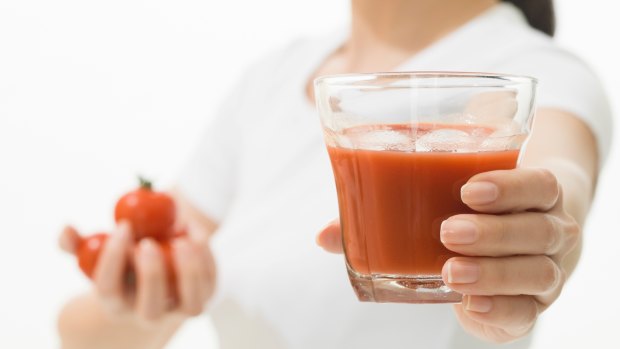This was published 7 years ago
Why does tomato juice taste better at 30,000 feet?

Many passengers swear tomato juice tastes better at cruising altitude.Credit: iStock
Taste is subjective, but many flyers who would never touch tomato juice at ground level swear it's their preferred drink in-flight. When Lufthansa realised it was serving 1.7 million litres a year to its flying customers, almost as much as the beer it was pouring them, it called in researchers to investigate.
What they found was that cabin pressure and the low humidity environment of a commercial jet aircraft, typically equivalent to about 8000 feet, or 2500 metres, dries up our nasal passages, which affects our sense of smell, and that changes the way we perceive flavours.
Some researchers have also suggested that the high decibel white noise of an aircraft cabin blunts our taste receptors, similar to when we have a cold. Sweet flavours taste less sweet and we're more inclined to add salt to the meal that comes off the trolley.
To many, the overpowering sweet and salty, or even slightly mouldy taste of tomato juice at ground level, becomes pleasantly fruity and refreshing when we sip it in-flight.
Newer generation aircraft such as Boeing's Dreamliner and the Airbus A350 are built using composite materials, which allow them to maintain a higher cabin pressure, equal to about 6000 feet, and higher humidity than a traditional aircraft cabin.
Whether this causes tomato juice to taste more like it does at ground level, and passengers to turn away, the jury has yet to decide.
Sign up for the Traveller newsletter
The latest travel news, tips and inspiration delivered to your inbox. Sign up now.